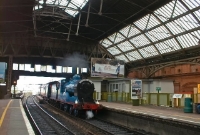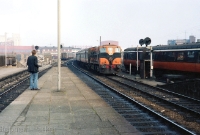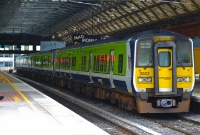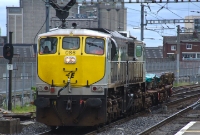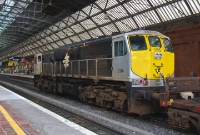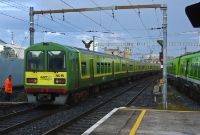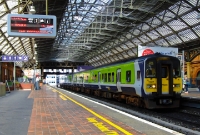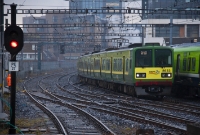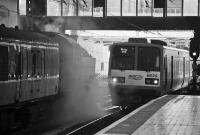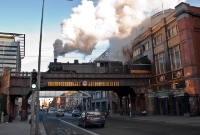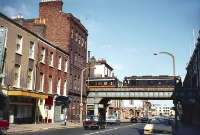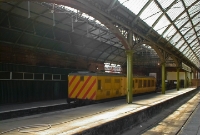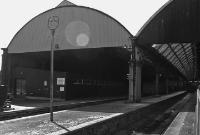Pearse
Pearse Station, formerly known as Westland Row up to 1966, on the south side of the River Liffey in Dublin City, was is in fact the starting point of the first railway to be built in Ireland, that of the Dublin & Kingstown Railway which opened in December 1834 and ran south to Kingstown, now Dun Laoghaire. Westland Row Station became a through station in May 1891 when the City of Dublin Junction Railway construction the 'loop line' north to Amiens St Station (Connolly).
The line south from Amiens St through Westland became the main Dublin to Rosslare line, taking precedence over the original Dublin Wicklow & Wexford Railway's main line to Harcourt St on the western side of the city. Pearse Station nowadays mainly consists of just its up & down platforms, covered by an overall roof. A new entrance is currently being constructed at the south end of the station to relieve the cramped booking office at the Westland Row end, from where the line is carried across the street on a fine ornate bridge.
The line south from Amiens St through Westland became the main Dublin to Rosslare line, taking precedence over the original Dublin Wicklow & Wexford Railway's main line to Harcourt St on the western side of the city. Pearse Station nowadays mainly consists of just its up & down platforms, covered by an overall roof. A new entrance is currently being constructed at the south end of the station to relieve the cramped booking office at the Westland Row end, from where the line is carried across the street on a fine ornate bridge.
